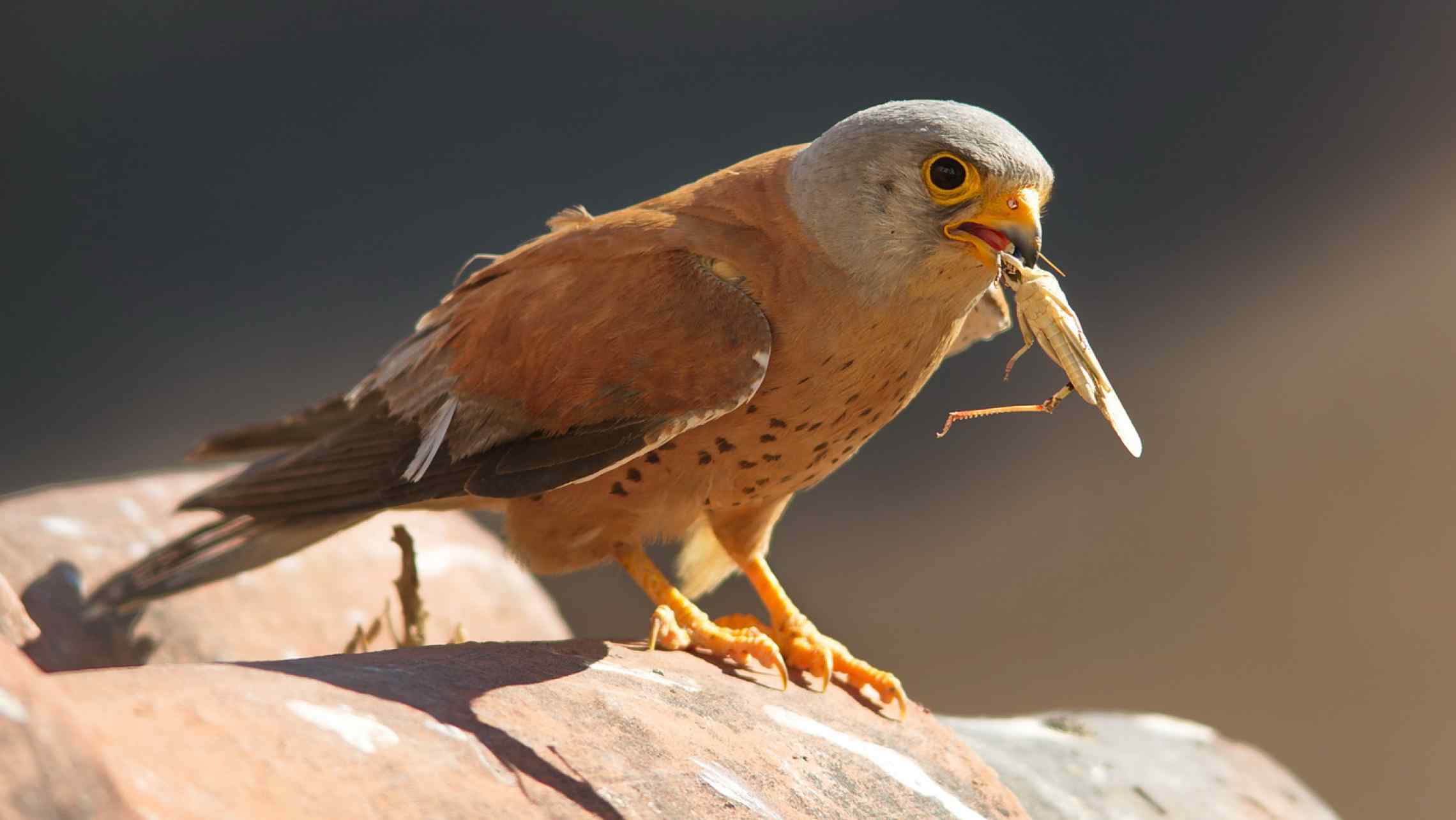The minister for Ecological Transition and Sustainability of the Regional Government of Extremadura, Olga García, has inaugurated the VIII International Congress online on the conservation of the lesser kestrel, appealing for awareness in all sectors so as to continue working for the conservation of the species. She has stressed as an example of what can be done the achievements of recent years with the LIFE-ZEPAURBAN project on "Urban ZEPA Management in Extremadura", of which this congress is one of the final events.
In representation of the European Commission, Simona Bacchereti, the supervisor of the Climate, Infrastructure and Environment Executive Agency (CINEA), has acknowledged the efforts of the Regional Government of Extremadura in the conservation of the lesser kestrel, and referred to the urban ZEPAs of Extremadura as unique protected spaces. She also stressed the importance of the Life projects in Europa as a tool for the conservation of species such as the lesser kestrel.
During the first day of the congress the sharp population decline of the lesser kestrel in the second half of the 20th century was shown. This is due to factors such as the loss of feeding habitat in its breeding areas, the elimination of nesting holes, competition with other species for these nesting holes, egg collecting, illegal hunting, or electrocutions.
LESSER KESTREL CENSUSES
The first block of speakers devoted themselves to censuses and the situation of the population of the species. Javier Bustamante (a researcher of the Spanish National Research Council - Consejo Superior de Investigaciones Científicas, CSIC - of the Doñana Biological Station) concentrated on census methodology. He expounded the difficulties in carrying out reliable lesser kestrel censuses as on occasion it nests in areas of difficult access or hard to control. For this reason, in the censuses from 2016 to 2018 a monitoring system based on a statistical model was used. By means of the relation between the number of kestrels seen on the wing during courtship and the number of breeding pairs in colonies with complete censuses and in addition by making several visits, data were obtained to allow the estimating of the size of the populations.
Juan Carlos del Moral (SEO España) revealed the results of the 2016-2018 national lesser kestrel census, which gave a figure of 10,090 breeding pairs in Spain in 2,343 colonies situated in the south-western half of the territory. The species is in decline in 14 provinces, in which it has been calculated that its population has fallen by between -28% and -40% in the last 20 years. Taking into account these data and the criteria of the International Union for Conservation of Nature (IUCN), the species must be included in the category of Vulnerable.
Francisco Guil Celada (service manager of the Natura 2000 Network. Ministry for Ecological Transition and the Demographic Challenge) gave a talk on the situation of the lesser kestrel on the Natura 2000 Network. This network of protected spaces (the largest in the world) protects at least 30% of the lesser kestrel population and is facing various management challenges. He analysed the predominant presence of the lesser kestrel in agricultural areas compared with wooded ones and also enumerated the main achievements and challenges of the Natura 2000 Network.
INTERNATIONAL EXPERIENCES
In the second block which was devoted to conservation experiences in different parts of the world, Inês Catry (assistant researcher at the InBIO/CIBIO, University of Oporto, Portugal) presented the results of long-term research (22 years) into the ecology and behaviour of the lesser kestrel with the aim of getting to the bottom of how global and local environmental changes are affecting the population dynamics of this species.
For his part, Maurizio Sarâ (Professor of Zoology of the University of Palermo, Italy) mentioned the large number of studies which have been carried out on the species over the last 30 years. The revision of this literature going back to the 1950s reveals the strong and weak points in the knowledge of the various aspects of the species. In his opinion aspects such as the impact on the colonies of "green energy" infrastructures (photovoltaic plants and wind power plants in the habitats of the colonies) or the management of land abandonment should be tackled in future lines of research.
The Greek researcher Nikos Tsiopelas (Coordinator of the LIFE-FALKON project and member of HOS-Birdlife, Greece) expounded how various conservation projects for the most important colonies in the country, mainly on the Tesalia Plain (with 100 colonies) have halted the decline of the species in Greece.
Olivier Duriez (Assistant professor of the Centre of Functional and Evolutionary Ecology, University of Montpellier, France) devoted his paper to the national plan of action for the conservation of the lesser kestrel which is being implemented in France. This plan has allowed an increase from two pairs in the 1980s to some five hundred at present; he anticipates that the number may rise further to about a thousand in ten years' time.
CONSERVATION OF THE LESSER KESTREL IN SPAIN
The third block was devoted to experiences on the follow-up and the conservation of the lesser kestrel in various territories of Spain. It was initiated by José Luis González (Secretary of Terra Naturalis) with a speech on the evolution of the lesser kestrel population in the urban ZEPAs of Extremadura. He presented data which clearly show a decline in population: a drop of -70% has been recorded in Extremadura and 43% in Spain over the last 7 years. Although the reasons for this fall have still not been determined, it is necessary to carry out direct action to strengthen the population and improve the breeding and feeding habitat as part of the LIFE project.
The situation of the species in Navarra was commented on by Diego Villanúa Inglada (Biodiversity Area, GAN-NIK Navarra Environmental Management, Regional Government of Navarra), who expounded some data on the follow-up of the most northerly population in the Iberian Peninsula with 185 pairs and in sharp decline.
Finally José Rafael Garrido (Coordinator of the Emergency Programme, epidemiological control, and follow-up of wildlife, Regional Government of Andalusia) explained the Andalusian experience with a revision of the population trends of the lesser kestrel in Andalusia from the mid-20th century to date. The population appears to have stabilised in the last three years at around 2,600 pairs. Garrido has also shown his concern about possible conservation problems in their winter quarters, the foreseeable alteration of the habitat owing to the proliferation of photovoltaic plants, and the incompatibility which often occurs between the conservation of the habitat of steppic birds and the Common Agricultural Policy (CAP).







